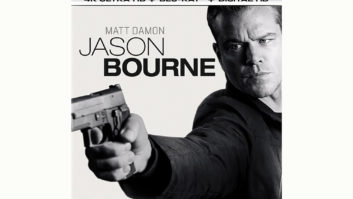It used to be such a simple question: “What’s on tonight?”
I’ve already dated myself in these columns, so it should be no surprise that I can recall a time when the only TV viewing options came from channels 2 through 13. Maybe a few UHF stations would weave through if you messed with the antenna enough, but that was it. Then came cable, and the options jumped up quite a bit, but still manageable. Whether it was Basic or Premium, you knew what you were paying for. (For those looking for a time period, let’s just say it was 1992 when Bruce Springsteen sang “57 Channels (And Nothin’ On)” — and that number would rocket into the hundreds and more shortly after.)
Even when home video was added to the mix, it was still easy to manage the physical media with only one major format at a time, and you typically knew what you owned whether it was on VHS, Laserdisc, DVD, or Blu-ray. Sure, if it was self-recorded and you were a sloppy labeler it could lead to trouble, but it was by no means an industry problem, and the invention of the DVR took care of all those issues.
Then streaming happened.
It started slowly with some old movies and TV shows, then picked up steam with original programming that turned buzzworthy and unleashed a torrent of new streaming platforms, each with its own wealth of curated and original content. Now it is difficult to keep up with all the new films and shows, let alone what is going on with the platforms, which merge and shift content constantly. (For the business side of the streaming industry, I’d recommend following Evan Shapiro, media universe cartographer, on LinkedIn for an informative and often entertaining look at the state of streaming companies.)
With all the issues and challenges clients bring custom integrators, deciphering which shows are on which platforms might be the easiest one to throw up our arms and say, “Not our problem,” but that is not going to work for many of our high-end, do-it-for-me clients. It is not enough that we provide them access to the platforms, we need to simplify it as well. It is a big enough problem that the topic was covered at the last HTSA Summit and will be the focus of the keynote presentation at CEDIA Expo.
Streaming is so prevalent that it showed up as one of our five home theater trends in this issue’s cover story. In that case, it was a benefit that helped build the dedicated media entertainment space over the past few years with its increased video quality and, more important, day-and-date access with a film’s theatrical release.
And while that day-and-date feature seems to be going away with most adopting a period of a few weeks before pushing a major film to streaming services, it continues to generate interest in home theaters.
Not helping things at all is the fact that the streaming industry as a whole is unsettled, filling mass-market news headlines with stories like Netflix introducing ads and the confusing merger of HBO Max and Discovery+ (if they ditch Hacks, we riot). It’s no wonder our clients are confused. And where do they look when they are confused? (Did you feel a little spotlight turn on you as you read that? You should have.)
So that does make it our problem. Fortunately, as evidenced by the topic being addressed at major educational events, it is being worked on, and I have no doubt that there will be a technology-based solution for all this from very smart people sometime soon (hopefully, very soon).
Until then, try to your coax your clients into telling you about every service they have so you can give them easier access, and then there is always IMDB to check when they call to ask, “Can I watch Only Murders in the Building?”







